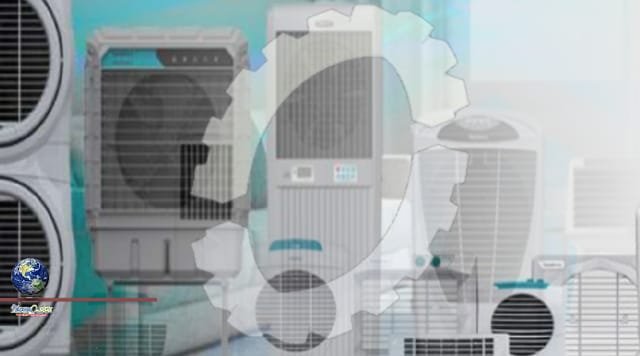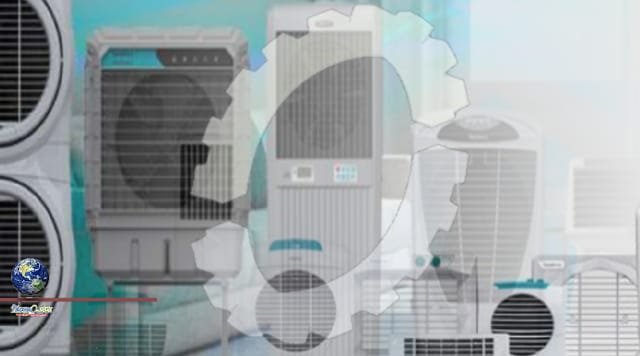10 features in air coolers , Air coolers have come a long way over the years. They are no longer just the boxy-looking affordable alternative to ACs that help save on electricity bills. Modern-day coolers offer a range of features userful and smart features

Many of these solve some of the biggest problems or issues that users had with coolers. However, buyers may have to pay a bit extra for these coolers. These are 10 features that you can find in some air coolers:
Air coolers are usually regarded to be ineffective in humid conditions. In fact, they are said to make the environs more humid. Some of the modern coolers come with ‘Humidity Control’ feature that allows users to adjust the flow of water on cooling pads to better manage the humidity level as per climate.
Turning on the ceiling fan at low or moderate speed while the AC is running helps to cool the room quickly. Once you set your AC temperature at optimum level, you should also turn on the fan to expand the throw of cold air. It is worth noting that using ceiling fans at high speeds while the AC is running can be counterproductive as it may take longer than required to cool the room.
the energy efficiency is calculated using Indian Seasonal Energy Efficiency Ratio standard or ISEER. It is the ratio of CSTL (Cooling Seasonal Total Load) to CSEC (Cooling Seasonal Energy Consumption). In simple words, It is the ratio of the annual amount of heat the AC can remove to the total amount of energy it can consume in a year. The energy efficiency of any AC is calculated on the average performance based on temperatures — outdoor — between 24 degrees to 43 degrees celsius. Thus, the energy efficiency of ACs changes every few years. This means that your 5-star AC may or may not remain 5-star AC next year.
People believe that the AC will provide better cooling when the temperature setting is set to low. However that is not the case. As per Bureau of Energy Efficiency (BEE), 24 degrees is the ideal temperature for the human body and any AC will take less load to achieve that target compared to the lowest temperature setting.
Although it’s AC’s job to keep your room cool, keeping the appliance cool can help it to perform efficiently. Keeping your AC away from direct sunlight or keeping it under the shade helps to avoid overheating and it also makes it easier for AC to cool better. If the AC is already super hot before you turn it on, it may take longer to cool the room.
Dirty AC filters can obstruct the air intake. Due to this, the appliance takes longer to cool the room resulting in huge electricity bills. It is advised that you should keep your AC filters clean. Experts suggest that you should clean the filters every two weeks to ensure better airflow and cooling.
You must have noticed that although there are tons of ACs running in a restaurant, theatre or any other public place, the cooling gradually decreases as the more people enter the place. One may think that the cooling efficiency of an AC depends on the size of the room and the capacity of the appliance, but the number of people in the room also affects the cooling. In simple terms, the more people in the room, the slower the cooling will be.
Most manufacturers claim that their AC doesn’t require service that often but that is a myth. It is recommended that you should get your AC serviced regularly as in India, ACs are not used throughout the year and the appliance can get dusty and jerky when not in use. Keeping your AC serviced will increase its cooling efficiency resulting in less energy consumption.
Most of us want our AC to start cooling instantly the moment we press the button on the remote. To make this happen, many people just turn off the appliance from a remote control and not the source. This results in waste of electricity in the form of ‘idle load’ as in this situation the compressor is left to idle so that it can start again instantly when the AC is turned on.
Inverter ACs are called such because they use a technology that can vary their cooling capacity by adjusting the power supply frequency of their compressor. Both inverter and non-inverter ACs can run on a battery inverter if the batteries are sufficient enough to power the load of the appliance.
Source: This news is originally published by gadgets
